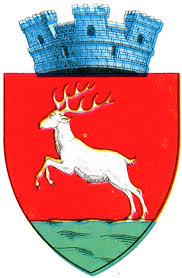 Gura Humorului
Gura Humorului

Gura Humorului is a town located in northern Romania, Suceava County in southern Bukovina. Until 1918 it was in the Austro-Hungarian Empire, and formed a shtetl.
According to the 1775 Austrian Bukovina census, its population comprised only about 60,000 spread over 10,422 square kilometers. In order to encourage the development of this sparsely-settled land, the authorities subsidized the immigration of colonists to Bukovina. With the end of the first wave of settlement, colonists were to continue arriving at their own expense. As a result of these policies, the census of 1910 showed that the population had risen to over 800,000. People of many different ethnic groups took part in this immigration, including Germans, Armenians, Hungarians, Ukrainians, Poles, Romanians, and Jews.
No Jews lived in Gura Humorului before 1835, when they were allowed to settle - joining other, already represented, ethnic groups (such as Germans from Bohemia, mainly from the Böhmerwald: thirty families settled on the mountainous and densely forested lands nearby the town, establishing a quarter named Bori). The Jewish community began to flourish in 1869, when they formed around a third of the town's population (880 people); the same year, a Beth midrash was established.
A turning point in the town's history was the disastrous fire of May 11, 1899 which destroyed most of the town - more than 400 houses, including many Jewish businesses and homes. It was rebuilt with donations from the United States Jewish communities.
During World War I, Bukovina became a battlefield between Austrian and Imperial Russian troops. Although the Russians were finally driven out in 1917, defeated Austria would cede Bukovina the province to Romania through the Treaty of Saint-Germain (1919). The Jewish community in Gura Humorului continued to grow, reaching 1,951 members in 1927.
Jewish cultural life reached its peak in the inter-war period. The languages of choice in city life were Yiddish, German and Romanian. Most of the Jewish community adhered to Orthodox Judaism, and Jewish youngsters studied the Torah along with secular subjects such as geography, history, and mathematics. The community had established Jewish social and political institutions that contributed to all fields of public life.
While persecutions began to increase under the threats posed by Romanian fascist movements such as the Iron Guard, it was World War II that brought an end to Jewish presence in Gura Humorului. Under the dictatorship of Ion Antonescu, Jews were rounded up and deported to Transnistria, where most of them perished - mass murdered through various means, including shootings and criminal negligence. Virtually all of the Jewish community in Gura Humorului was deported: 2,945 people were all transported on October 10, 1941.
The vast majority of survivors made aliya in 1947-1951. Statistics show that they numbered below 500 people in all at the time of their departure.